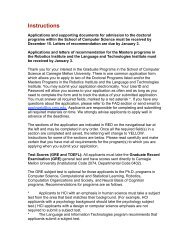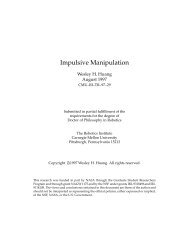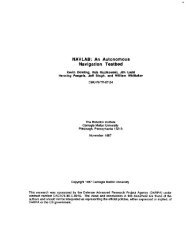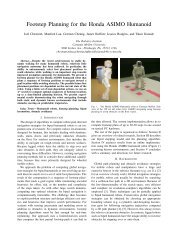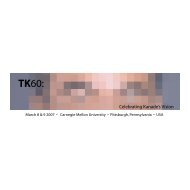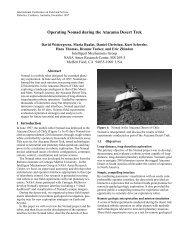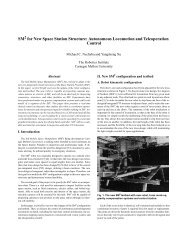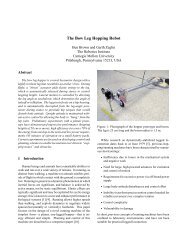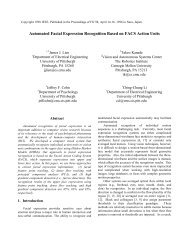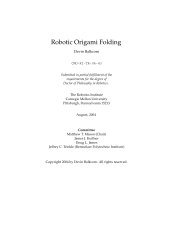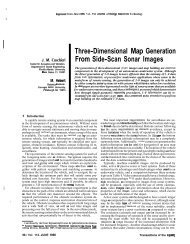A System for Automated Fixture Planning with Modular Fixtures
A System for Automated Fixture Planning with Modular Fixtures
A System for Automated Fixture Planning with Modular Fixtures
You also want an ePaper? Increase the reach of your titles
YUMPU automatically turns print PDFs into web optimized ePapers that Google loves.
1.1. Background<br />
1<br />
Chapter 1<br />
Introduction<br />
Indusny has inmasingly paid more attention to the automath of nearly every facet of manufacturing in<br />
order to eohrmce the quality of products and prcductivity. In addition, custom' ever-increasing demand<br />
<strong>for</strong> rapid production has <strong>for</strong>ced inmLsay to put more ef<strong>for</strong>t into automation than ever be<strong>for</strong>e. As a result,<br />
industry wd computer-aided design (CAD) and computergided manufacturing (CAM) tools to<br />
Suceesshrl)~ automate p t design, drafting. scheduling, and oIher step in various manufacturing processes.<br />
Meral cutting is a labcr-intensive manufacturing prmm that requires expensive machine tools and highly<br />
skilled human experts wih~ous hauds-onexperience,. In metal cutting, it has been a constant goal to<br />
enhance productivity and meet the customer's demanl to pdwe be= quality pontr faster than be<strong>for</strong>e. In<br />
recent years, there bas been much success in automating various metal cuniog pr0~esse.s. For example,<br />
Compurpa numerically control (CNC) and dhX numerical ConmI~C) have in-d the productivity<br />
of olachiac tools by pgmming NC codes at a disamce or from aremote terminal and downloading them<br />
to machine tools. Also, NC oodes have beem aulamatidy gcllerared <strong>with</strong> an expat system resulring in<br />
subsnmrial reduction in manual programming time [preiss 841.<br />
Receotly. metal cutting indusaies have begu to experitnCe difliculty finding highly skilled machinists<br />
because the number of apprentices is decnasing. It is l iy that the sinmion will worsen in the future<br />
accmdbg to the trend. As a result, the need <strong>for</strong> automatiw of the metal cutting process has increased<br />
rapidly.<br />
Ooce he dimeasion of raw stock is determined to create apart, a metal Cuttiog prwsss can be divided<br />
into two major activih 1) setup planning and 2) machining accr~dhg to setup plans. Setup planning lays<br />
OUI the necessary metal CaUing operations to create the put from mw s a by determining the number of<br />
setups and the w p sequence. In order to fully ~pmrmate a metal c&g pess. both the setup planning<br />
and be actual cutting procedure must be automated. However, the complexity and many uncertainties in<br />
the metal cuuing process have impeded the progress toward automafion.<br />
The seulp in metal cutting specifies the orientadon and position of the part on the machine bed, a set of<br />
feams to be cn~ a plan to cut each feature (We call this acutting plan), and aplan to locate the pan<br />
accurately relative to the cutting tool and Md the part rigidly in position (We call this a fixture plan). A<br />
cutting plan specifies the necessary cutting tools, tool paths, feed rate, and depth of cut, etc. A fixture plan




